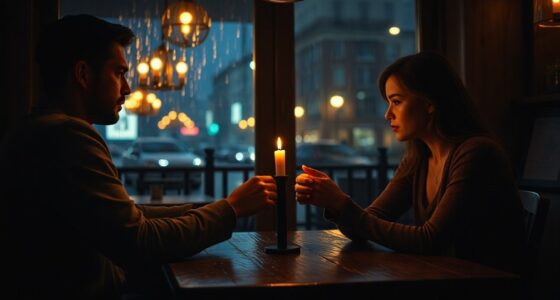The secret formula behind viral love stories lies in their relatability and emotional depth. You'll find compelling dynamics like friends-to-lovers and enemies-to-lovers that resonate with real-life experiences. Love triangles introduce thrilling conflict, while breaking social norms sparks unexpected connections. Social media shapes romance, adding layers of complexity. By weaving these elements together, stories capture hearts and minds. Stay tuned to uncover the intricacies of these captivating narratives and what makes them so irresistible!
Key Takeaways
- Engaging emotional dynamics, such as vulnerability and conflict, create relatable and immersive experiences for readers in love stories.
- Strong character development through backstories and meaningful interactions enhances chemistry, making relationships feel authentic and compelling.
- The use of popular tropes like friends-to-lovers or enemies-to-lovers generates tension and excitement, drawing readers into the narrative.
- Incorporating social dynamics and challenges, like breaking norms or navigating jealousy, adds depth and realism to romantic connections.
- Maintaining a balance between idealization and realistic portrayals of love fosters relatable and enduring stories that resonate with a wide audience.
Exploring the Friends-to-Lovers Trope

As you delve into the Friends-to-Lovers trope, you'll discover why it resonates so deeply with readers. This beloved narrative mirrors real-life transitions, showcasing how friendships can evolve into something more.
You'll appreciate the emotional depth as characters reveal their vulnerabilities, drawing you into their journey. With slow burns and jealousy often sprinkled throughout, the tension keeps you engaged. This trope often highlights the emotional intimacy that can lead to sudden romantic feelings in friendships. The essence of unconditional love can also be reflected in these relationships, as friends navigate their feelings with support and acceptance.
The balance of sincerity and humor, along with archetypes like the secret admirer, adds charm to the story. By establishing a strong backstory and shared interests, writers create genuine chemistry through banter and meaningful conversations.
Ultimately, it's about overcoming conflicts to achieve a satisfying resolution, making this trope not just relatable, but also incredibly compelling.
The Allure of Enemies-to-Lovers Dynamics
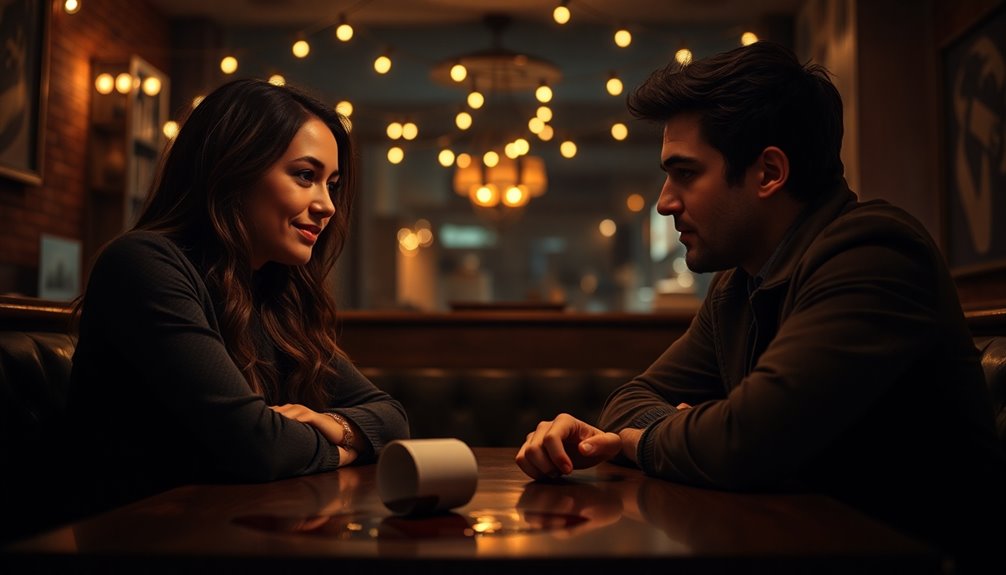
The enemies-to-lovers dynamic captivates readers with its thrilling tension and emotional depth, inviting you to witness how animosity can transform into passion. This trope thrives on the psychological appeal of overcoming obstacles, making it a favorite across genres like romance, sci-fi, and fantasy. You'll find characters evolving from adversaries to lovers through shared experiences, fueled by high-stakes conflict. Their initial dislike often stems from misunderstandings rather than true hatred, adding nuance to their relationship. As they collaborate toward a common goal, their chemistry ignites, blurring the line between hate and love, and showcasing the idea of being loved despite their flaws and annoyances.
Navigating Love Triangles and Emotional Conflict

While enemies-to-lovers dynamics showcase the intensity of conflicting emotions, love triangles introduce a different layer of complexity that can leave you questioning your loyalties.
In fact, about one-third of Americans have found themselves caught in this emotional web, especially those aged 18 to 24. Navigating feelings of jealousy, insecurity, and uncertainty can lead to significant stress and heartbreak. Understanding narcissistic behavior can be crucial when dealing with emotionally charged situations like these.
You might feel guilt or betrayal as two people compete for your attention, creating emotional turmoil. Commitment and intimacy often take a backseat in these situations, impacting relationship satisfaction. Writing progress can be challenging in these scenarios, as emotional distractions may hinder your ability to focus on important tasks.
To cope, developing effective conflict resolution skills and emotional intelligence can help you manage the chaos.
Ultimately, love triangles can spark personal growth through self-reflection and navigating these intricate emotions.
Breaking Social Norms: The Popular Kid and the Outcast
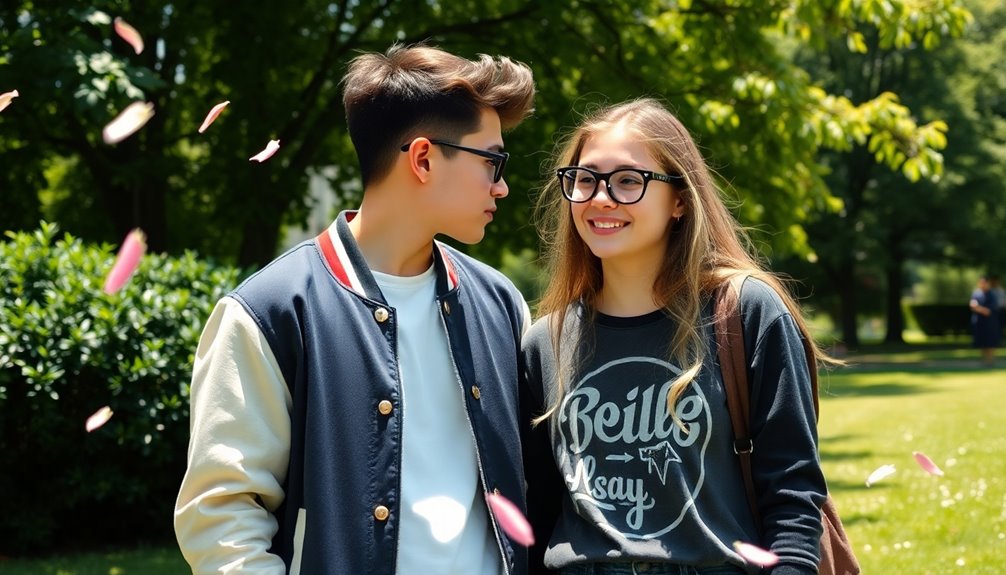
Breaking social norms often leads to unexpected connections, challenging the boundaries between the popular kids and the outcasts.
You might find that the popular kid, often burdened by the weight of reputation, secretly admires the outcast's authenticity. While navigating this complex landscape, you realize that crossing these social boundaries can foster deep understanding. The outcast, often marginalized, brings a fresh perspective that the popular kid may lack. Together, they can dismantle stereotypes, revealing the vulnerabilities beneath their social masks. As they bond over shared experiences, they inspire others to look beyond superficial labels. This connection not only defies societal expectations but also shows that acceptance can flourish in the most unlikely places, creating a powerful narrative that resonates widely. Moreover, it highlights how increased popularity correlates with higher likelihood of victimization, reminding us that even those who seem to have it all may face hidden struggles. Additionally, their relationship often reflects the importance of emotional intelligence and maturity, allowing them to navigate challenges together.
The Tension of Secret Relationships
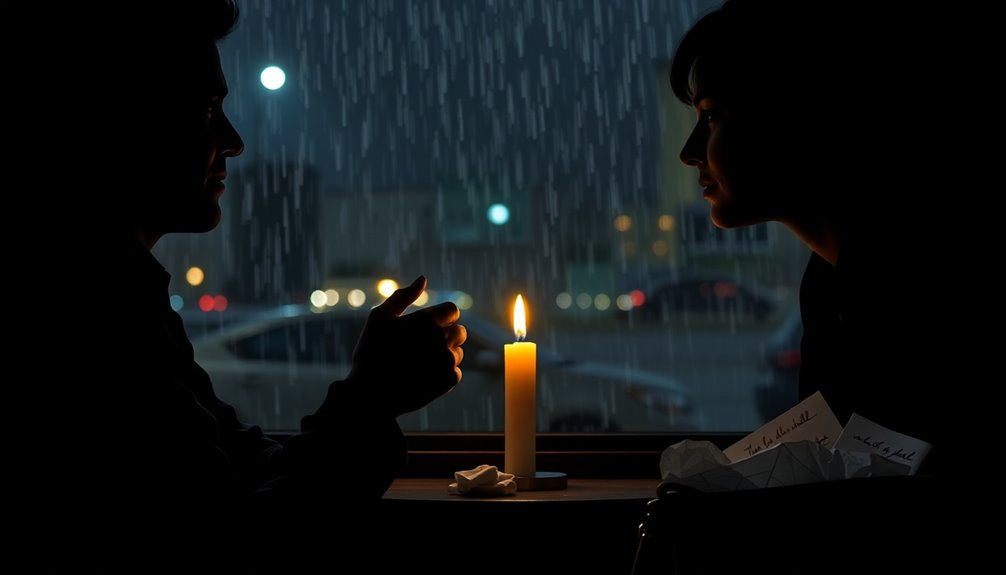
Navigating the tension of secret relationships often feels like walking a tightrope, balancing the thrill of intimacy with the weight of concealment. You might experience a rush when you steal moments together, yet that excitement often comes hand-in-hand with stress and anxiety. The secrecy can erode your self-esteem, leaving you feeling isolated from friends and family who don't know your truth. As you hide your connection, you may also grapple with reduced commitment, fearing the emotional burden that comes with potential betrayal. Intimacy becomes a challenge, as deep emotional bonds are stifled by secrecy, especially as shared flaws and insecurities can deepen connections. Furthermore, the gaslighting tactics of narcissistic individuals can exacerbate feelings of confusion and self-doubt in such relationships. Ultimately, you find yourself at a crossroads, weighing the need for honesty against the fear of losing what you've built in silence.
The Impact of Social Media on Romance

Secret relationships can leave you feeling isolated, but social media has changed the landscape of romance, bringing both connection and complexity. Platforms like Bumble and Tinder have made dating more accessible, with 38% of Americans using these apps. You might find that social media fosters emotional closeness, with 44% of users feeling more connected to their partner. Additionally, research indicates that love promotes cooperation and can enhance relationship dynamics, but it can also spark jealousy—40% of people cite social media as a major cause of insecurity. Engaging in online communities can provide couples with additional support and shared experiences that strengthen their bond. Public displays of affection on platforms can enhance relationships, but distractions from smartphones can weaken them. Ultimately, while social media offers tools for connection, it also brings challenges that require careful navigation to maintain your romantic happiness.
Psychological Stages of Love and Attachment
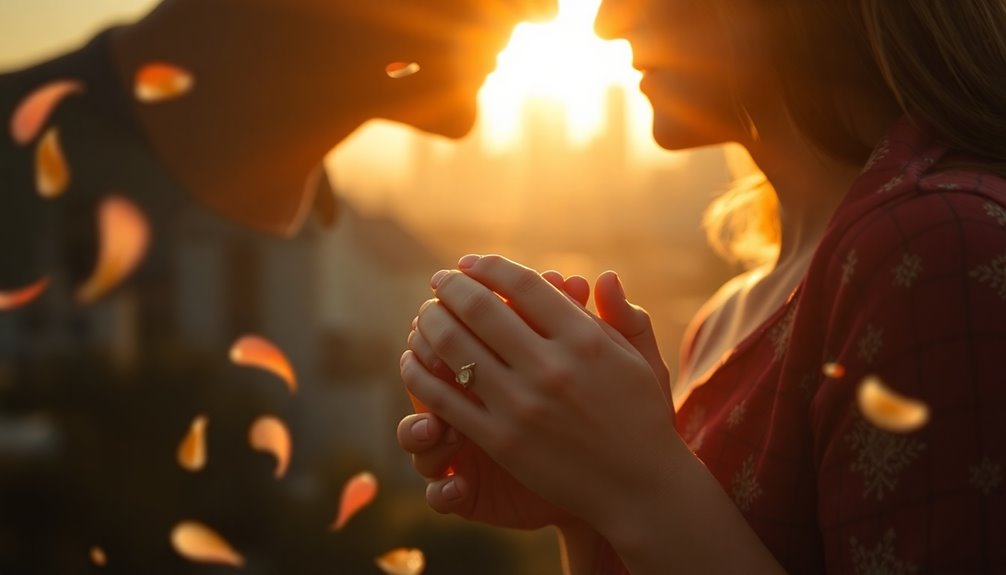
As you explore the journey of love, understanding the psychological stages of love and attachment can provide valuable insights into your relationships. You begin with the attraction stage, where hormones spark intense feelings and infatuation. As romance unfolds, dopamine and norepinephrine enhance your emotional connection, creating euphoric highs. During this stage, testosterone increases sex drive, leading to powerful desires that can cloud judgment. However, as you move into the disillusion stage, idealized perceptions fade, revealing true personalities and potential conflicts. Transitioning to the attachment stage, oxytocin fosters long-term bonding and security, which is crucial for nurturing emotional connections. Ultimately, you reach stable love, characterized by commitment and trust. Throughout these stages, emotional maturity and effective communication are key to navigating challenges and fostering deeper connections, ensuring your relationship thrives despite the ups and downs.
Frequently Asked Questions
How Can I Create Believable Romantic Tension in My Stories?
To create believable romantic tension in your stories, focus on conflict and challenge. Introduce both external obstacles and personal struggles that test your characters' relationship.
Build tension slowly, using subtle moments and dynamic interactions to engage readers. Incorporate dramatic irony to heighten suspense, and don't forget non-verbal cues that convey unspoken feelings.
Keep the narrative fresh by avoiding clichés and allowing your characters' romance to develop gradually, leading to an emotionally satisfying payoff.
What Are Common Pitfalls in Writing Love Triangles?
Did you know that nearly 80% of romance novels feature love triangles? While they can add intrigue, there are common pitfalls to avoid.
Underdeveloped characters can lead to reader disinterest, while predictable choices make the plot stale. Prolonged indecision and shallow conflict can stall momentum, and unrealistic emotions might alienate your audience.
Ensure each character has depth, and explore the consequences of their choices to keep readers engaged in your love triangle.
How Do Social Dynamics Affect Character Relationships?
Social dynamics significantly shape character relationships.
When you consider how social networks influence interactions, you'll see that characters often react based on perceived norms and cultural values. High population density can spark competition or feelings of isolation, impacting their connections.
Your characters' personalities, such as extraversion or emotional intelligence, also play a role in how they engage with one another, creating rich, believable dynamics that resonate with your audience.
What Role Does Humor Play in Romantic Storytelling?
Humor plays a vital role in romantic storytelling by making characters relatable and their experiences memorable.
When you incorporate humor, it lightens the mood and engages readers, evoking strong emotions.
It adds depth to situations and showcases character dynamics, enhancing intimacy and connection.
How Can I Depict Character Growth in a Romance?
To depict character growth in a romance, you need to explore the truth behind their flaws and vulnerabilities.
Show how these imperfections create conflict and challenge their relationships. Use a three-act structure to highlight their inner journey, illustrating how they confront fears and make choices that drive change.
As they face obstacles together, allow their dynamic interactions to reveal deeper connections, making the eventual growth feel earned and satisfying for readers.
Conclusion
As you navigate the vibrant tapestry of love stories, you'll find that each trope paints a unique hue in the canvas of romance. Whether it's the fiery clash of enemies or the sweet whispers of secret lovers, every narrative captures the heart's dance. With social media as the backdrop, these tales unfold like a blooming flower, revealing layers of connection and longing. Embrace these formulas, and you might just discover the magic woven into your own love story.





